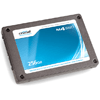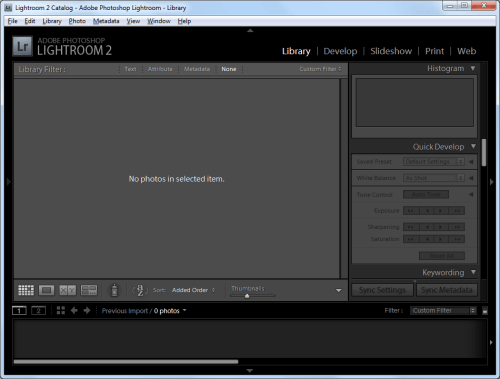- Qualcomm Launches Snapdragon 4 Gen 2 Mobile Platform
- AMD Launches Ryzen PRO 7000 Series Mobile & Desktop Platform
- Intel Launches Sleek Single-Slot Arc Pro A60 Workstation Graphics Card
- NVIDIA Announces Latest Ada Lovelace Additions: GeForce RTX 4060 Ti & RTX 4060
- Maxon Redshift With AMD Radeon GPU Rendering Support Now Available
Crucial m4 256GB SATA 6Gbit/s SSD Review

It’s been a while since we last took a look at a Crucial product, so for the next one, how about we make it interesting? SSDs aren’t uncommon, but high-end SSDs that don’t feature a SandForce controller are – and of course, that’s what makes Crucial’s m4 notable. Does its lack of a SandForce controller hold it back? Let’s take a look.
Page 6 – Real-World: File Transfers, Adobe Lightroom
Finally, we reach the first of our real-world tests where there are no unusual testing or scoring algorithms to leave us scratching our heads, just simple tests to see how an SSD changes actual system performance.
For the File Transfer test we took a 4.5GB archive and timed how much time was required to transfer the file to another destination on the same drive. Keep in mind that with a hard disk, this requires the actuator arm to seek back and forth between the source and destination sectors of the disk platter, while any SSD can concurrently read and write to separate flash chips at once.

Crucial’s m4 drive chews through the 4.5GB file transfer just one second behind that of the Vertex 3. Even without the compression tricks of the SandForce drive the m4 is able to muster some powerful transfer speeds, and is able to do so regardless of the file type being utilized.
Adobe Lightroom 3.4
With Adobe Lightroom, importing image files with “Copy” simply acts like a file transfer, exactly like our previous test. Rather than simply time how long it takes to create a duplicate set of 500 RAW files we elected to choose the “Copy as DNG” import option. This will convert the NEF files (Nikon’s equivalent to RAW) into the Digital Negative standard while importing them to its image library.

This test was not particularly effective as Adobe Lightroom 3.4 only spawns two threads, meaning that even with the power of a Core i7 that has eight threads available, the CPU was still the main bottleneck. When Adobe deems fit to update Lightroom to take advantage of more threads we will see a real need for faster storage here, as such a task as this is perfectly suited for high thread parallelization and SSDs with a high queue depth.
Even so the m4 knocks twenty seconds or more off the time compared to the previous lineup, and finishes within an impressive five seconds of the Max IOPS.
Support our efforts! With ad revenue at an all-time low for written websites, we're relying more than ever on reader support to help us continue putting so much effort into this type of content. You can support us by becoming a Patron, or by using our Amazon shopping affiliate links listed through our articles. Thanks for your support!





